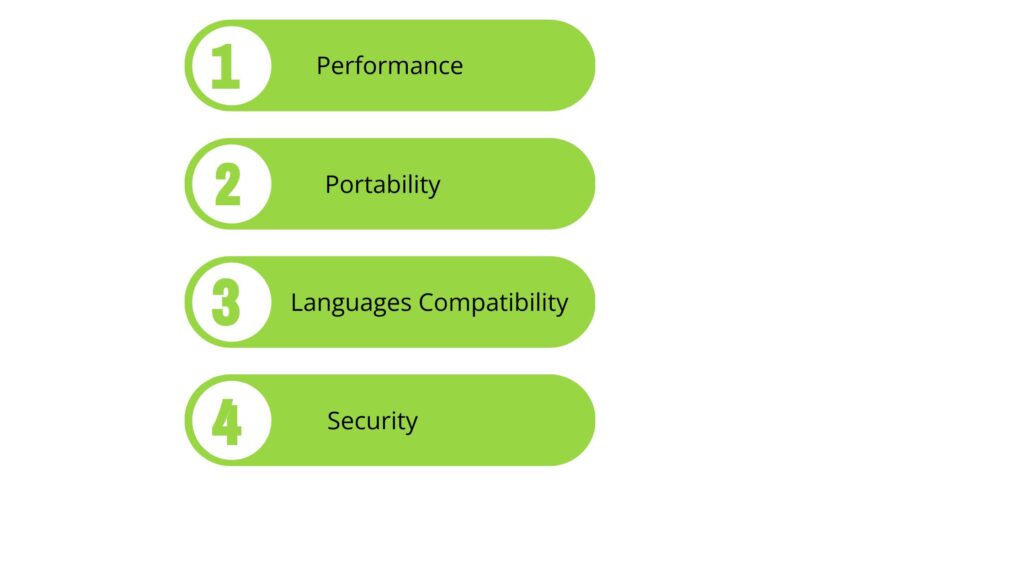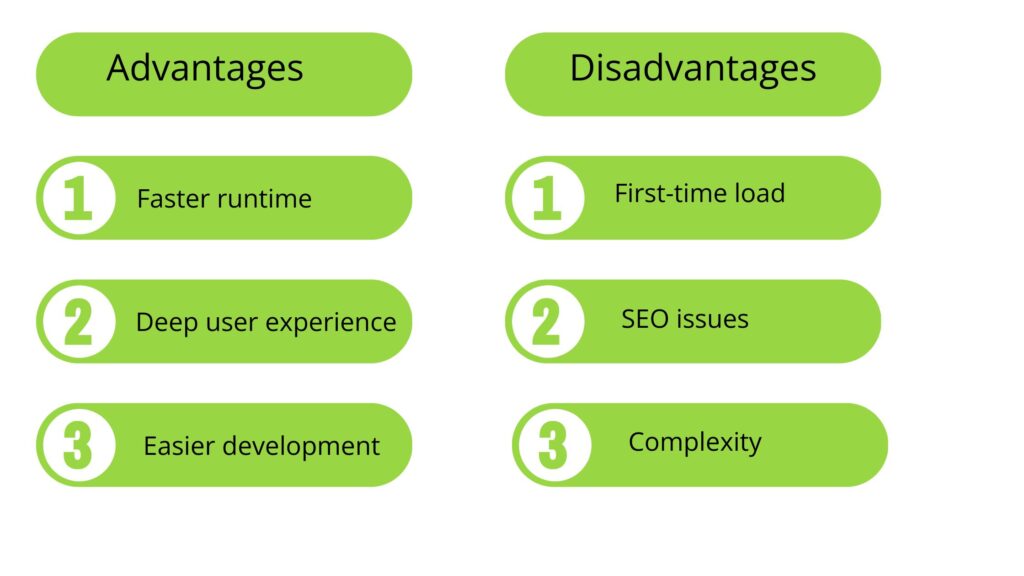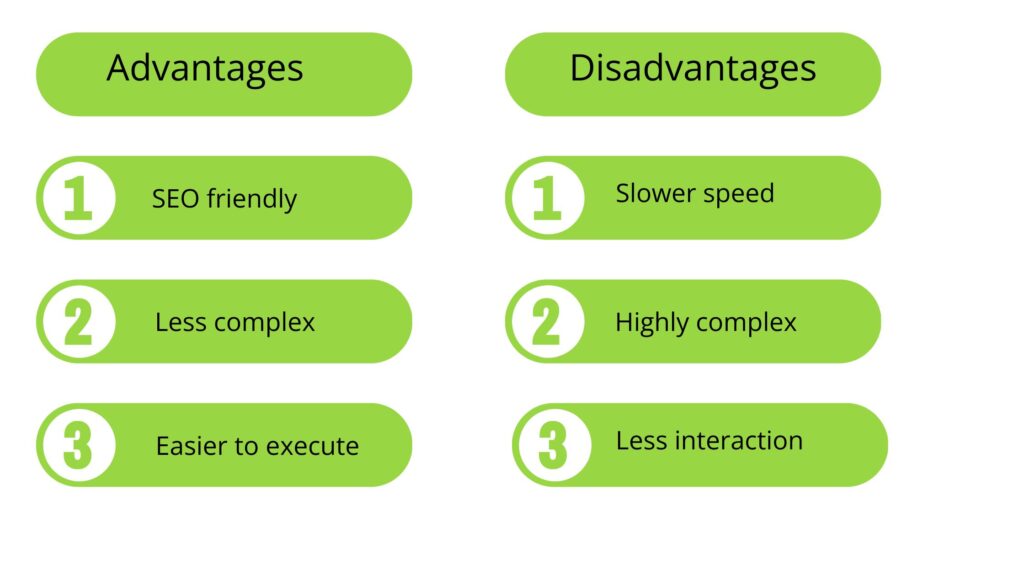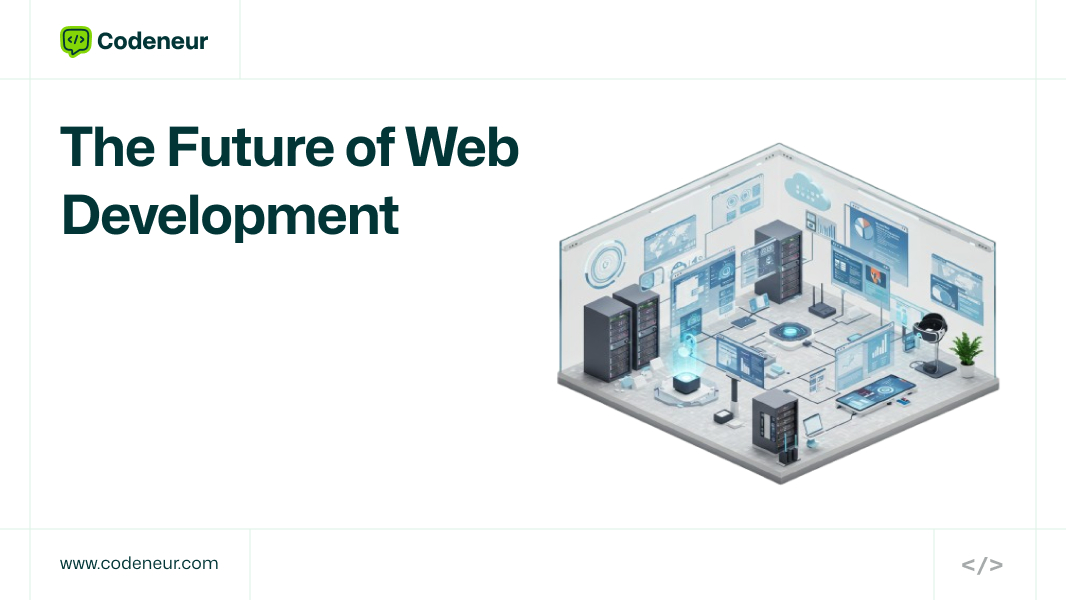The future of web development is pretty exciting! The technology is growing with new tools and helping developers build sites that are easy to use and more powerful.
Imagine going from simple Web pages to amazing interactive Web sites. New tools and ideas combine to create new ways to design faster, easier, and more fun websites.
In this blog, Let’s explore the future of web development, the trends, ideas, and how you’ll experience web development.
The game changer-web Assembly
Before we dive into web assembly, let’s understand how it changes from simple websites into great websites. Innovative tools and creative ideas come together to give a faster, more simplified, and more involving web experience.
What is Web Assembly?
Web Assembly, often known as Wasm, is a low-level binary instruction format for code execution on the web. JavaScript enables code written in C, C++, and Rust to execute within web browsers.
How Does Web Assembly Work?
The bytecodes for any programming language, say C, C++, or Rust, are compiled. What’s important here is, that it is a binary format, portable, and gets executed on any device supporting Web Assembly.
- Loading and Execution: The Web Assembly module will be loaded into the runtime environment of the browser. Then, the JavaScript engine of the browser will interpret the operations depicted in the WebAssembly instructions.
- Interoperability: Web assembly provides for a chance of interaction between JavaScript and Webassembly code. JavaScript can call the Webassembly functions, and vice-versa Webassembly can call the JavaScript functions.
Advantages of Web Assembly

Performance: Any code can run faster than javascript which is computationally intensive like image processing and video decoding.
Portability: Web assembly modules run on any platform supported by it. Whether it’s a web browser, server, or device.
Languages Compatibility: The code is easy to compile in many programming languages and more accessible to developers.
Security: Web assembly modules are sandboxed, meaning the base code would not run on the user’s system.
Some Possible Applications and Real-World Examples
- Games: High-performance web-based games, such as Unity games can be created by using web assembly
- Virtual Reality: Using WebAssembly for a full virtual reality experience straight in the browser is also possible. It has got more immersive and interactive content.
- Image and Video Processing: Web Assembly is used for image and video processing applications including real-time filtering and effects.
- Machine Learning: Machine learning models may be deployed using the WebAssembly. This allows on-device inference, therefore minimizing latency.
Progressive Web Apps (PWAs)
Next, Progressive Web Apps have the best functions of native apps and traditional web apps. This service allows user to receive the best experience even when their device is not online. This service by an installation option, allowing users to install the app on the home screen for easy access.
Key Features of PWAs:
- Offline support: The contents and resources can be cached. This enables PWAs to work even though the internet connection doesn’t exist or is lame.
- Push notifications: The information reaches the users’ attention because push notifications are sent even if the application has been closed..
- Installation on the home screen: Installed directly on the home screen. That creates a feeling similar to native applications and reaches the application quicker.
- Full-screen mode: One can run the application full-screen to provide the user with an experience that makes them fully immersed.
- Service Workers: PWAs offer service workers better performance and reliability. The network requests for caching and push notifications,
Benefits of User Experience and Engagement for PWAs
- Super native-like experience: A PWA provides an extremely native-like experience to users. User engagement is prompted by offline capabilities and push notifications.
. - Ease of discoverability: It can be indexed by a search engine to enhance discoverability and supports greater reach.
- Cost-effective development: Since building a PWA would be cheaper it utilizes web technologies, and PWAs are much cheaper than native apps.
Successful PWA Examples and their Impact :
- Twitter Lite: PWA Twitter is successful in providing users with faster and more reliable options at places where data connectivity happens to be very poor.
- Alibaba: The adoption of Alibaba’s PWA has maximized the mobile commerce business of this company and has provided users with a seamless shopping experience.
- Forbes: The use of PWA for the Forbes website has effectively added much user engagement along with time spent on this site by its users.
Finally, PWAs are very useful technology for web development in cases where one likes to develop engaging and perform web applications.
SPA vs MPA: The Architecture War
Single Page Applications (SPAs), as well as MPAs, or Multi-Page Applications, are two architectural patterns under which web development happens. The advantages as well as disadvantages and the choice between SPAs and MPAs depend on factors for a particular project.
SPA vs MPA: A Comparision
| FEATURES | SPA | MPA |
| HTML page | Load application into a single HTML page | More interactive and native-like experience |
| Dynamic updates | Part of the page upload with javascript without refreshing the whole page | Full page is reloaded to move from one page to another |
| User experience | More interactive and native like experience | Follow traditional web development |
Advantages and Disadvantages of SPAs

Advantages :
- Faster runtime: SPAs can be faster than MPAs, most of the time in page loading secondary pages.
- Deeper user experience: SPAs can deliver a more enriched experience.
- Easier development: SPAs are easier to develop and maintain, particularly for smaller applications.
Disadvantages :
- First-time load: The first time taken by a SPA to load is much higher than the MPA.
- SEO issues: SPAs are far more complex to optimize for the search.
- Complexity: SPAs in general, can be a little challenging to develop and maintain, especially for larger applications
Advantages and Disadvantages of MPAs

Advantages
- SEO friendly: They tend to be relatively friendlier to SEO than SPAs.
- Less complex development: MPAs are relatively less complex to develop and maintain, especially when it comes to smaller applications.
- Easier to execute in older browsers and older devices: MPAs are easier to run in older browsers and older devices
Disadvantages
- Slower speed: MPAs are relatively slower than SPAs, especially with page loads when doing multiple pages
- Less interactive user experience: MPAs compared to SPAs present a less interactive and engaging user experience
The Future Trend: The Emergence of SPAs
SPA’s popularity in recent years is likely to remain the best driver for web development trends. First, the essence of SPAs brings a much more interactive and engaging user experience. What’s even more impressive is that progress in JavaScript frameworks and tools also became a big reason for many developers.
However, developers use MPAs extensively, especially when developing less complex applications or where the SEO would matter. The developers use both SPAs and MPAs to choose what suits a project based on its requirements.
Serverless Architectures: The Event-Driven Computing
What is Serverless Computing?
Serverless computing is also termed a Function as a Service (FaaS). Cloud computing allows people to develop, run, and manage applications without managing the servers themselves. Users don’t need access to any servers; the provider automatically scales the infrastructure based on changing demands.
Advantages of Serverless Computing
- Low operational overhead: One can create in-writing code with no server or infrastructure management headaches.
- Scalability: Serverless functions scale up and down according to workloads to ensure that everything runs at optimal performance and cost-effectiveness.
- Cost-effective: serverless computing is oftentimes more cost-effective than the traditional infrastructure since you pay only for that which you consume.
- Fast development: Serverless functions deploy and develop quickly to reduce time to market.
- Higher fault tolerance: Serverless functions develop a highly fault-tolerant and, therefore less likely to cause downtime.
Development becomes easy with this application and develops independent units of application, thereby it is possible to handle complex applications easily and save cost.
Popular Serverless Platforms and Their Use Cases
- Azure Functions: Microsoft delivers a completely full-fledged serverless platform. Developers can craft and deploy event-driven applications with the utmost flexibility and scalability
- Google Cloud Functions: Google’s serverless platform supports fully managed environments for running stateless functions.
- Firebase Cloud Functions: This serverless platform is very suitable for developing mobile and web apps. It integrates well with other services
- AWS Lambda: Amazon offers a fully-fledged serverless computing service that integrates with most other products, providing customers with several options.
Use Cases for Serverless Architectures
- Create and run APIs with minimum infrastructural headache
- Event-driven functions are for data processing in real-time
Web Applications: Scalable web applications can built through very efficient serverless functions. Machine Learning: Building and managing the resultant machine learning models, of course, within a serverless environment.
Such serverless architectures applied over the years and are one of the most powerful ways of building and deploying applications. They can streamline the processes of development within organizations while reducing costs and creating very scalable, yet reliable, applications.
Cloud-Native Applications: The Future of Web Infrastructure
What are Cloud-Native Applications?
In Cloud-native applications the developer designs and builds in the cloud, utilizing the scale, flexibility, and efficiency that cloud platforms offer. Most applications comprise microservices, containers, and DevOps practices.
Characteristics of Cloud-Native Applications
- Microservices architecture: Developed from several services breaking down into smaller, independent abilities that developed, deployed, and scaled uniquely.
- Containerization: Applications with their dependencies are packaged into mobile packages through containers, such as Docker.
- Continuous delivery and deployment: Automated pipelines that develop, test, and deploy applications at lightning-fast speed.
- API-first approach: APIs are the first and foremost interface interacting with an application.
- Cloud-agnostic: Designed in a way that they ported across various cloud-based platforms.
Advantages of Cloud-Native Development
- Scalability: Cloud-native applications scaled up or down auto-managed according to demand.
- Flexibility: They easily adapt to the new requirement or technology.
- Resilience: The cloud-natured, cloud-native applications perform better when failures arise.
Additionally, It helps organizations realize optimal cloud spending as it provides only services for resources in need. Innovation Cloud-native development induces a culture of experimentation and innovation.
Cloud Systems and Their Offerings for Web Developers
- Amazon Web Services (AWS): Huge range of services including EC2, S3, Lambda, and EKS.
- Microsoft Azure: Provide an all-inclusive cloud computing environment with services but not limited to the Azure App Service, Azure Functions, and the Azure Kubernetes Service.
- Google Cloud Platform (GCP): Part of infrastructure along with scalable services: Compute Engine, Cloud Storage, and Cloud Run.
Conclusion
To sum up, trends like WebAssembly, PWAs, and cloud-native architectures are going to be the future of web development. They not only promise better performance and new user experiences but simplify the development process as well.
Join our Codeneur’s ultimate full-stack developer Bootcamp and unlock your potential. Gain practical, hands-on learning on real-world projects that prepare you for the industry and secure a 100% paid internship for 3 months.
Join today, and be a part of the leading edge of the future!
Key Takeaways
- Web development is going forward with state-of-the-art technologies such as WebAssembly, PWAs, and serverless computing.
- WebAssembly allows performing languages such as C, C++, and Rust on web browsers with high performance.
- PWAs have the most effective features from native and web apps, having offline support, push notifications, and simple installability.
- SPAs offer speedier, interactive experiences than MPAs, with SPAs incurring SEO problems.
- Serverless computing enables economical, scalable development without server handling.
- Cloud-native apps employ microservices, containers, and continuous deployment for flexibility and scalability.
- Trends of the future concentrate on enhancing user experience, performance, and efficiency of development.


Leave a Reply